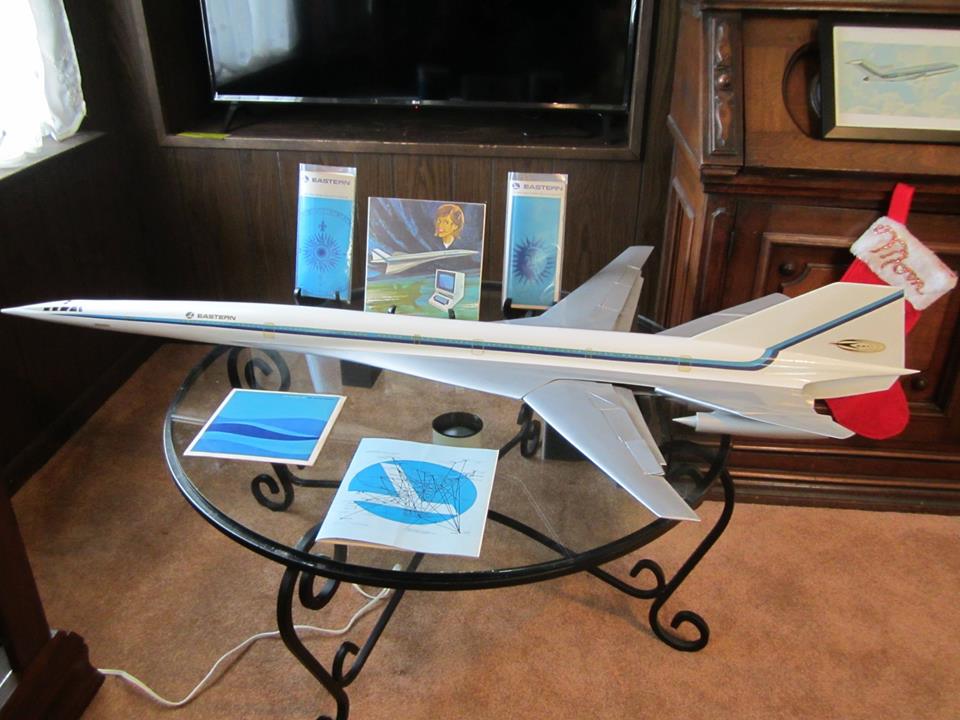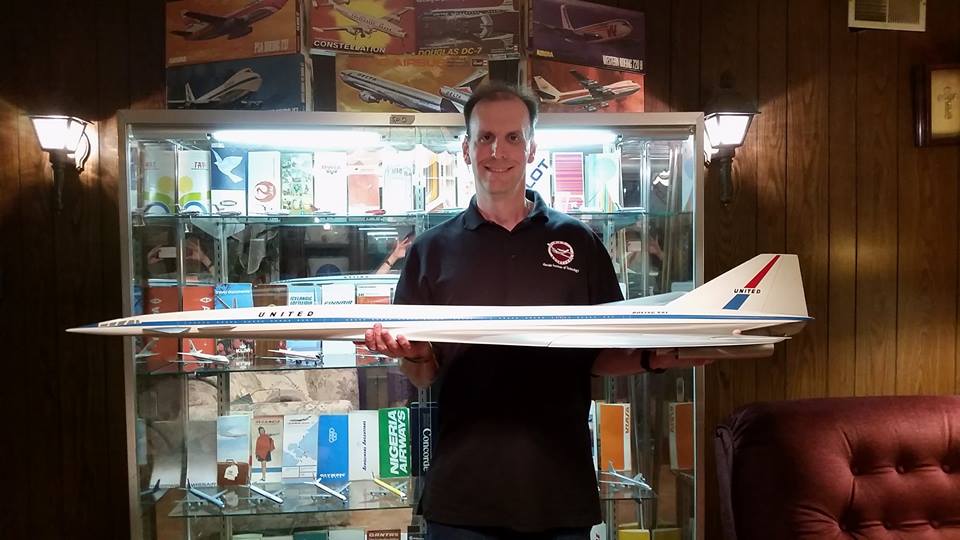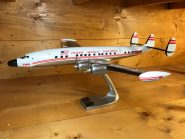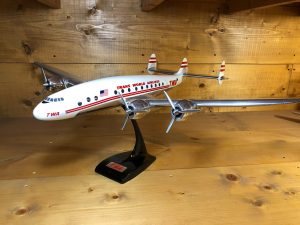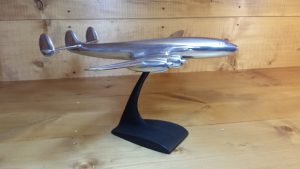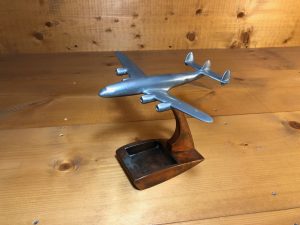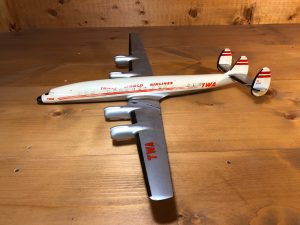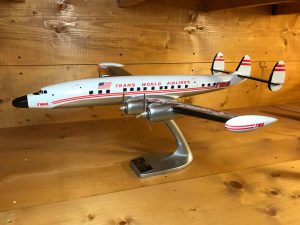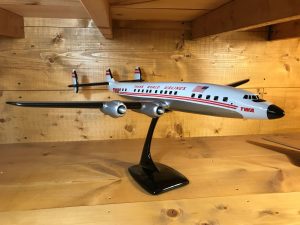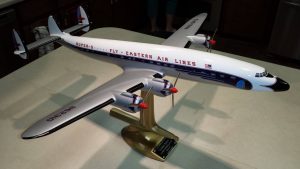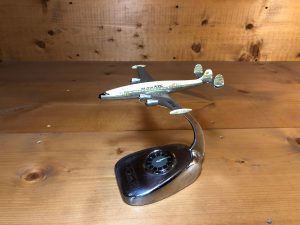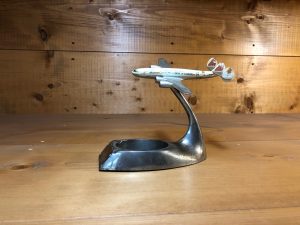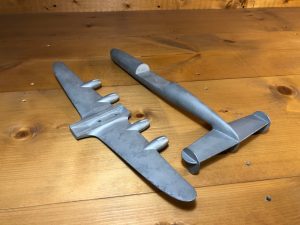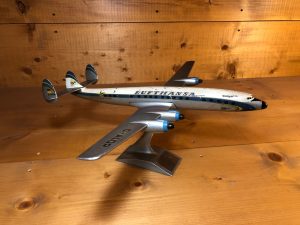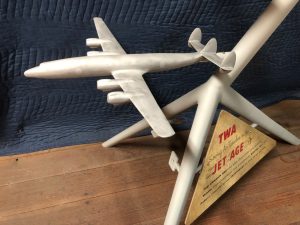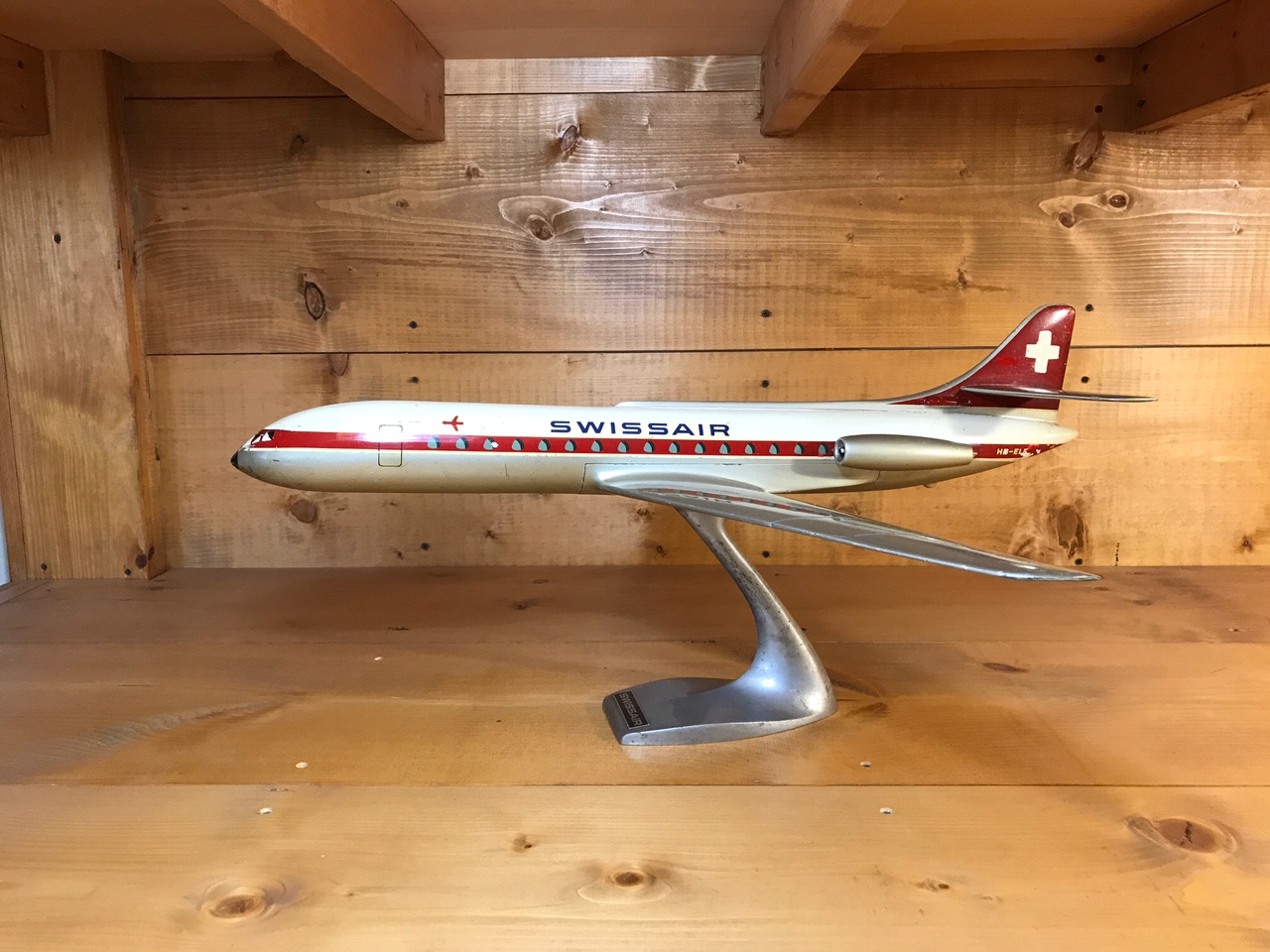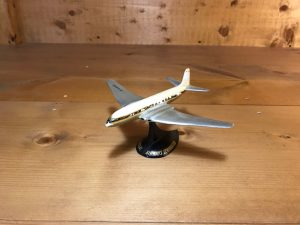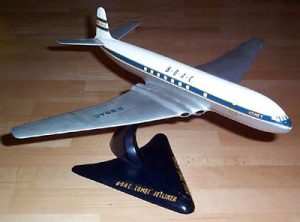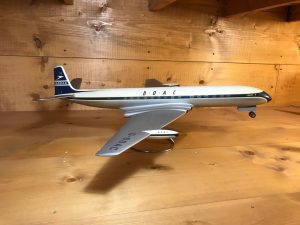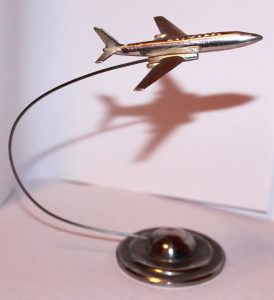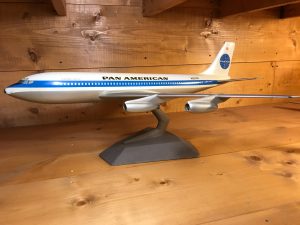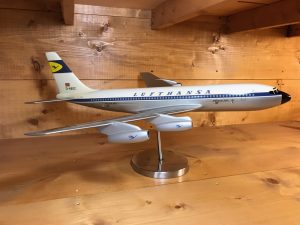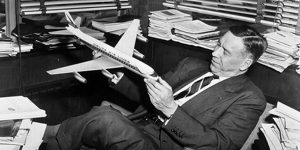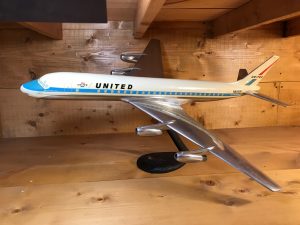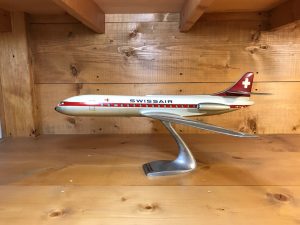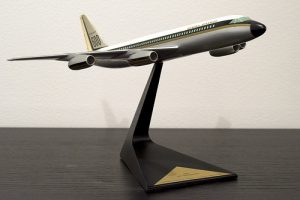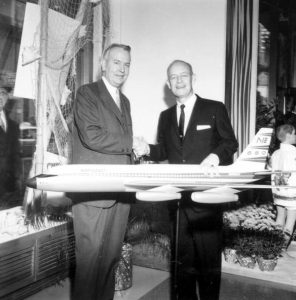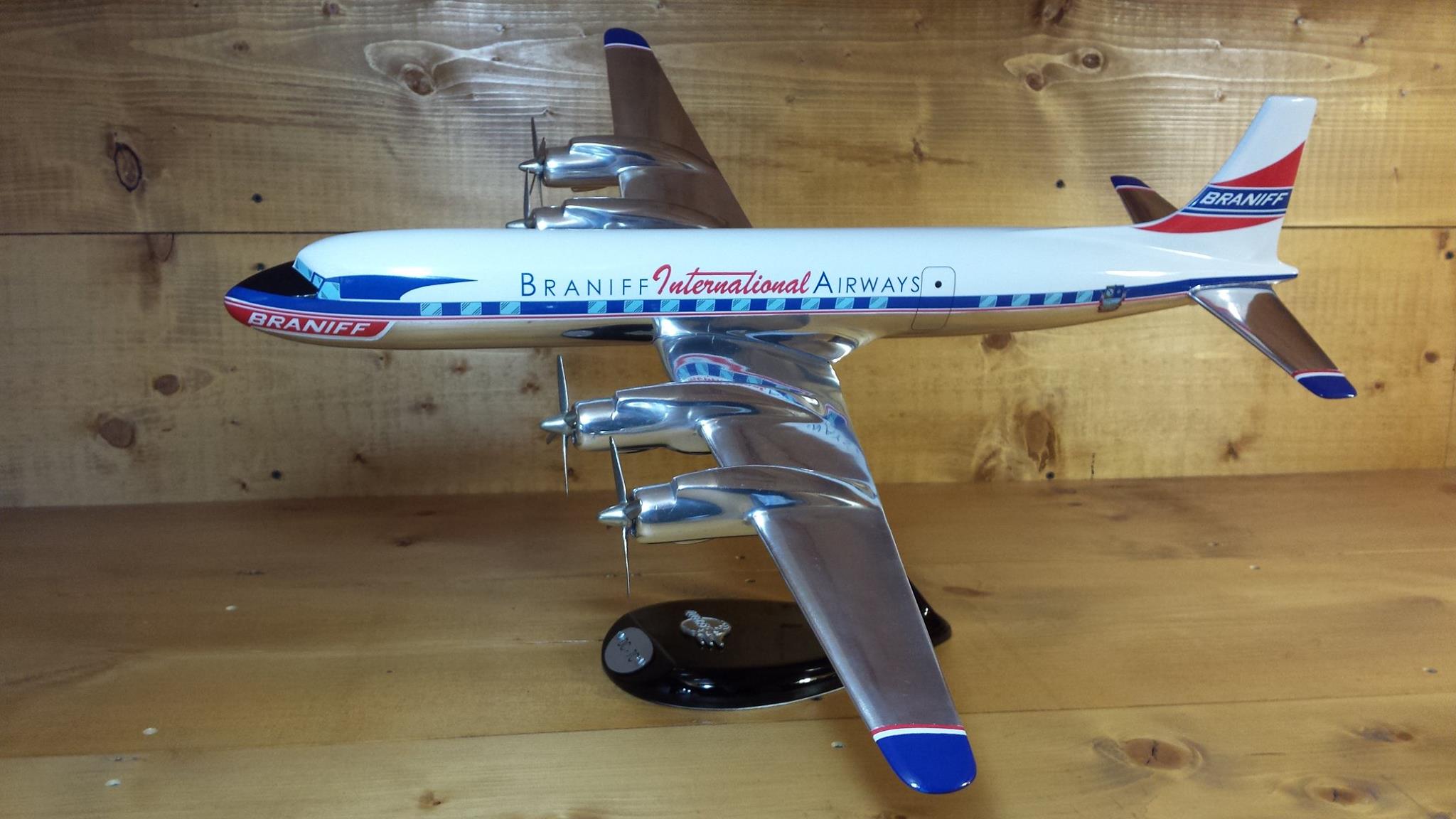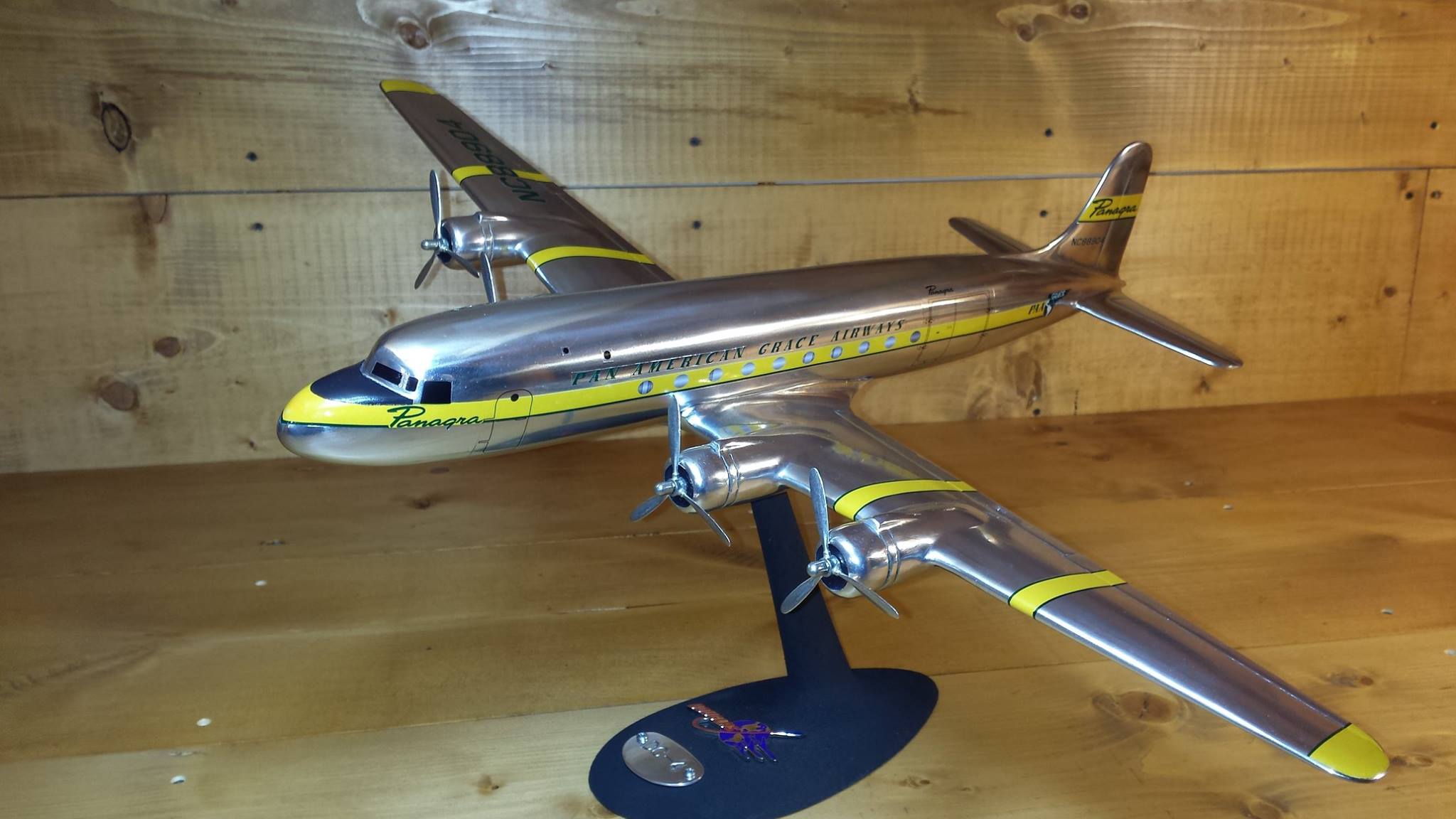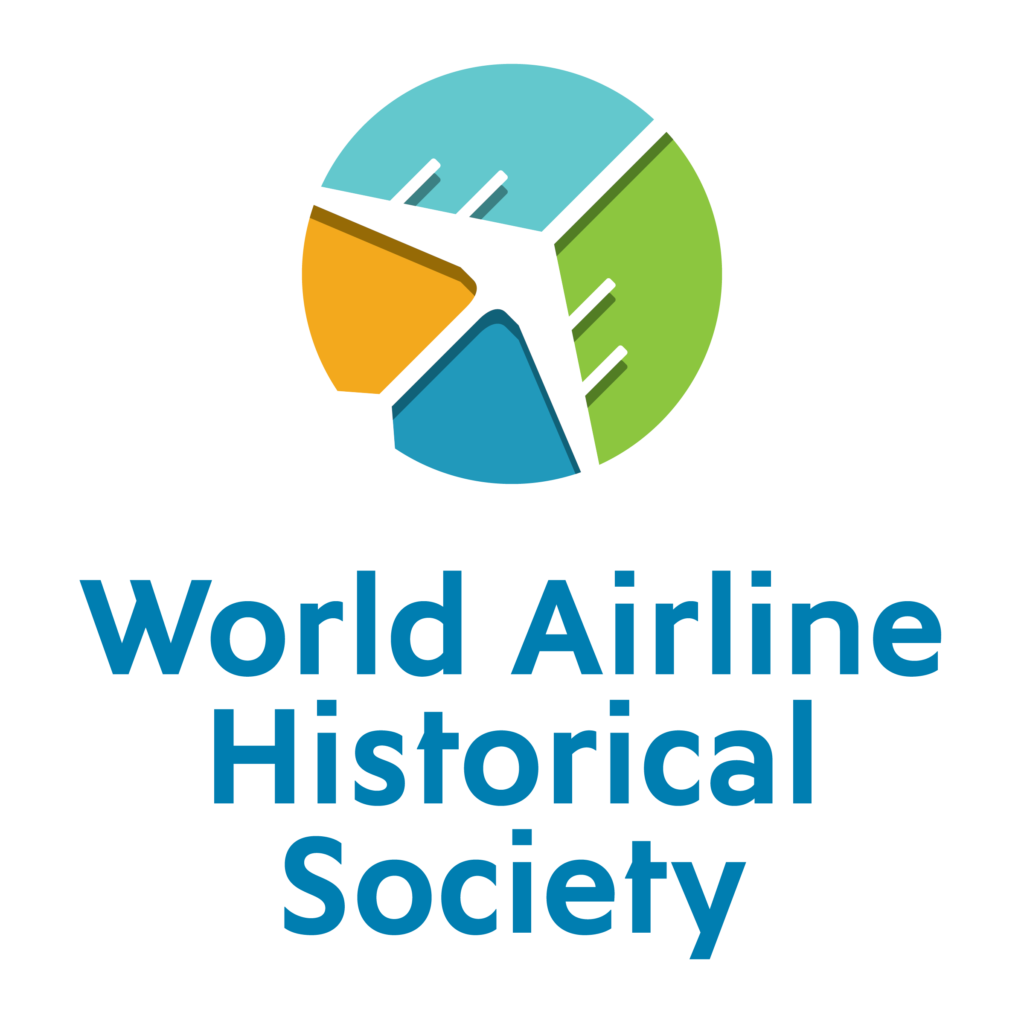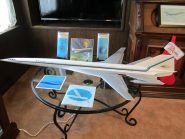
The Ongoing Mystique of the Boeing SST
Written by Shea Oakley
Last year I shelled out the most money I have ever paid for an airliner model in a lifetime of collecting. It is a five-foot-long 1/50th scale needle-nosed monster with working variable sweep wings, flaps and spoilers in Eastern Air Lines colors. On its tail is a 1960s-modern logo depicting an arrow-shaped form with what look like circular shockwaves arcing off behind it. The letters in the logo read simply “Boeing SST.” For several months she underwent a light restoration by an outside party that fixed a few egregious physical flaws it has acquired over the past 50+ years without destroying its originality (but sadly also some erased some small flap use instruction decals printed directly on those control surfaces)
Half a century is a long time in human terms, and I suspect many of my readers have no idea what a “Boeing SST” is. For the sake of brevity (because this is not, primarily, a historical article) let me just say that Concorde, the Anglo-French supersonic jet that even the youngest airline enthusiast at least knows existed, was supposed to have a much faster, much larger American competitor. She was known as the Boeing 2707 (for Mach 2.7 707) and would have been made from heat-resistant Titanium, been 300 feet long and carried up to 350 passengers at 1,800 MPH. Cruising altitude was to be about 70,000 feet. The airplane was originally going to have a “swing-wing” (think “B-1”) that would be swept back to allow this giant to assume the shape of a dart when at cruise speed and fold out to allow subsonic aircraft characteristics on take-off and landing.
The massive project was largely U.S. government-funded and airlines all over the world ponied up a million-dollar deposit for each of the over 120 aircraft they had optioned to buy. Unfortunately not even Boeing could make the variable sweep design work. It was simply too heavy with all the hardware involved to make those wings “waggle” and the company ended up with a slightly smaller fixed delta-wing configuration with a separate tail plane as its final design. Then concerns over sonic booms, airport noise, operating economics, along with a few socio-political issues of the time conspired to kill the whole project when the Senate voted against continued funding of the 2707 in 1971. A billion taxpayer dollars had been spent at that point and just about all they had to show for it was a wooden mock-up (and some big “ticket office” type models like mine).
So that was that. The beautiful Concorde flew passengers just over a quarter-century as a technological masterpiece and an economic disaster. Only 16 were built and the widespread “Supersonic Age” in air transport everyone expected back then never came to be. Some of us are still waiting for it.
This brings me back to my new ridiculously expensive model (which, by the way appears to have been Boeing factory-built) and my point. There is a cohort of airline enthusiasts who are about 50 and over who were starry-eyed little “avgeeks” when it looked like the Boeing SST was going to make it into full-scale production. We read about and saw dramatic drawings of the airplane and figured that when we were a bit older we were going to get to fly in her. To say the prospect of traveling aboard such a stupendously large and fast vehicle was an exciting idea for us to dream about is a major understatement. Since nothing close to it in scale has been considered since (The promising “Boom” SST currently under development will carry about 55 passengers) we are still enamored with the 2707, all these years later.
I’ve noticed that every time an original item of any kind related this airplane goes up for auction on eBay it tends to sell quickly and for a high price. There is a reason for this. The kids who were waiting for the airplane, and never forgot her, are now 50-60 years old. They have often reached the pinnacle of their professions, either in aviation or elsewhere, and they have disposable cash. Some of that money is being spent to enable continuing happy memories of a now distant childhood when it seemed like flying commercially in a gigantic Titanium dart at nearly three times the speed of sound was just around the corner.
That is the ongoing mystique, and legacy, of the Boeing SST.
Postscript: The year before acquiring the Eastern 2707, I was also able to find a United Boeing SST display model, this one built by California models makers PacMin, of the same scale, minus the working wings and control surfaces. I’ve included a photo of it as well for this article.
